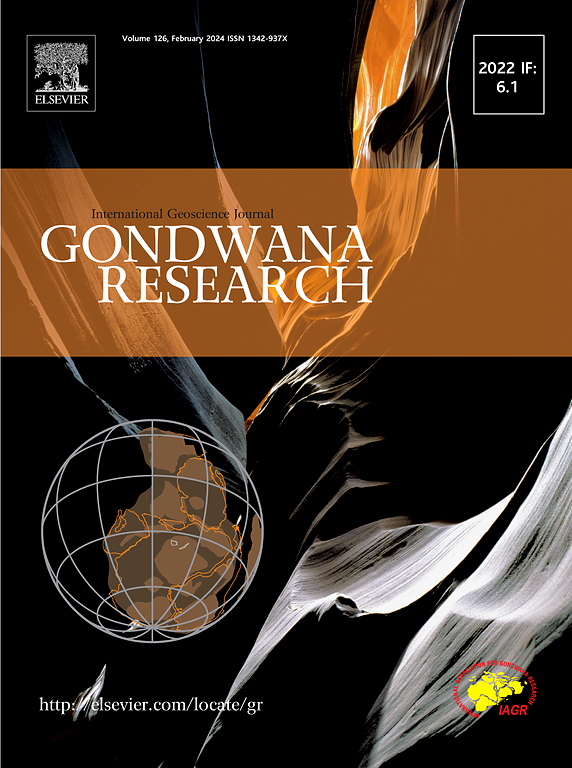Development and application of an efficient microplastics extraction method based on glycerol flotation for environmental soil samples
IF 7.2
1区 地球科学
Q1 GEOSCIENCES, MULTIDISCIPLINARY
引用次数: 0
Abstract
Risk assessment and removal of microplastics (size 1 µm to < 5 mm) from the environment necessitate continuous improvements in extraction methods, particularly for complex matrices such as soil. Glycerol exhibits flotation ability that can be used to improve microplastic extraction. In this study, we primarily evaluated glycerol flotation capability and measured its recovery rate, cost, and safety, compared to conventional microplastics extraction salts, including sodium chloride (NaCl) and sodium iodide (NaI). Our results showed that glycerol efficiently extracted five standard microplastic polymers (recovery rates 60 ± 10 % to 100 %), with recovery rates for polyethylene glycol terephthalate (PET) and polyvinyl chloride (PVC) in glycerol higher than that in NaCl. NaI is costly and toxic, and its color effects microplastic analysis, while glycerol is 40 times cheaper and safer than NaI. The glycerol flotation efficiency was highest at 0.5 h, and the recommended time for glycerol flotation was 0.5 h. This newly developed method was applied for extraction of microplastic from environmental soil samples, and we found PP and PS, with an abundance of 0.11 ± 0.04 items/g in tidal spreading soils, and PP, PVC, and PE, with abundance of 0.21 ± 0.13 items/g in agricultural soils. In conclusion, glycerol flotation, as an innovative flotation technique, demonstrates superior flotation efficiency compared to NaCl. The expense of glycerol is inferior to that of NaI, and it is relatively safer for microplastic extraction. Glycerol flotation provides an effective method for microplastic extraction from complex matrices, saves laboratory costs, and ensures environmental safety. This study provides practical and novel insights into the safe and efficient extraction of environmental microplastics from biological, solid, and liquid samples.

基于甘油浮选的环境土壤样品微塑料高效提取方法的开发与应用
风险评估和去除微塑料(尺寸1µm至<;5毫米),需要不断改进提取方法,特别是对于复杂的基质,如土壤。甘油具有浮选能力,可用于改善微塑料的萃取。在本研究中,我们主要评估了甘油浮选性能,并与传统的微塑料萃取盐(包括氯化钠(NaCl)和碘化钠(NaI))进行了比较,测量了其回收率、成本和安全性。结果表明,甘油可有效提取5种标准微塑料聚合物(回收率60±10% ~ 100%),其中聚对苯二甲酸乙二醇酯(PET)和聚氯乙烯(PVC)在甘油中的回收率高于在NaCl中的回收率。NaI昂贵且有毒,其颜色影响微塑性分析,而甘油比NaI便宜40倍且更安全。将该方法应用于环境土壤样品中微塑料的提取,发现潮汐扩散土壤中PP和PS的丰度为0.11±0.04个项目/g,农业土壤中PP、PVC和PE的丰度为0.21±0.13个项目/g。综上所述,甘油浮选作为一种创新的浮选技术,其浮选效果优于NaCl。甘油的费用低于NaI,并且相对安全用于微塑料提取。甘油浮选为从复杂基质中提取微塑料提供了有效的方法,节省了实验室成本,保证了环境安全。本研究为安全有效地从生物、固体和液体样品中提取环境微塑料提供了实用和新颖的见解。
本文章由计算机程序翻译,如有差异,请以英文原文为准。
求助全文
约1分钟内获得全文
求助全文
来源期刊

Gondwana Research
地学-地球科学综合
CiteScore
12.90
自引率
6.60%
发文量
298
审稿时长
65 days
期刊介绍:
Gondwana Research (GR) is an International Journal aimed to promote high quality research publications on all topics related to solid Earth, particularly with reference to the origin and evolution of continents, continental assemblies and their resources. GR is an "all earth science" journal with no restrictions on geological time, terrane or theme and covers a wide spectrum of topics in geosciences such as geology, geomorphology, palaeontology, structure, petrology, geochemistry, stable isotopes, geochronology, economic geology, exploration geology, engineering geology, geophysics, and environmental geology among other themes, and provides an appropriate forum to integrate studies from different disciplines and different terrains. In addition to regular articles and thematic issues, the journal invites high profile state-of-the-art reviews on thrust area topics for its column, ''GR FOCUS''. Focus articles include short biographies and photographs of the authors. Short articles (within ten printed pages) for rapid publication reporting important discoveries or innovative models of global interest will be considered under the category ''GR LETTERS''.
 求助内容:
求助内容: 应助结果提醒方式:
应助结果提醒方式:


